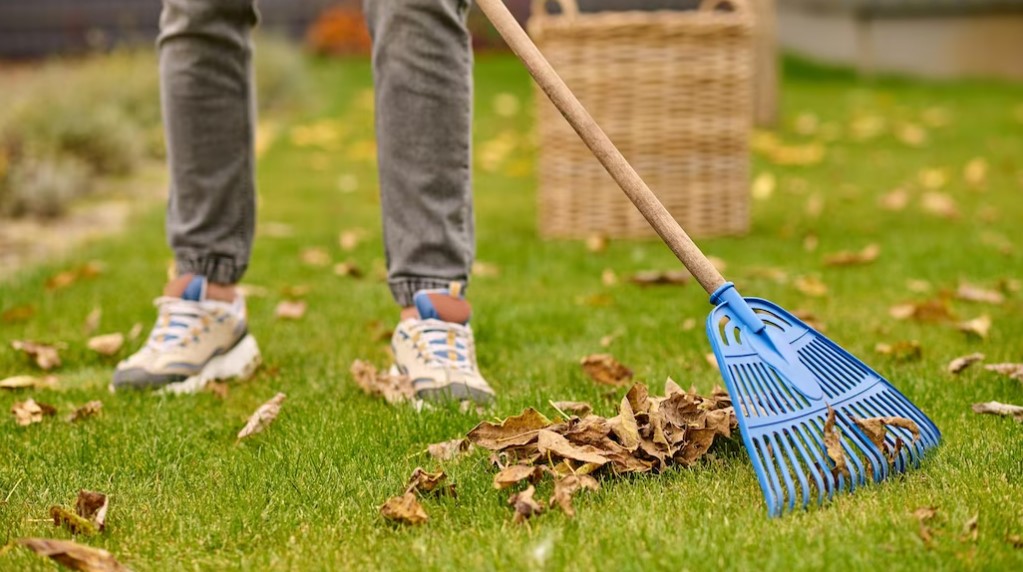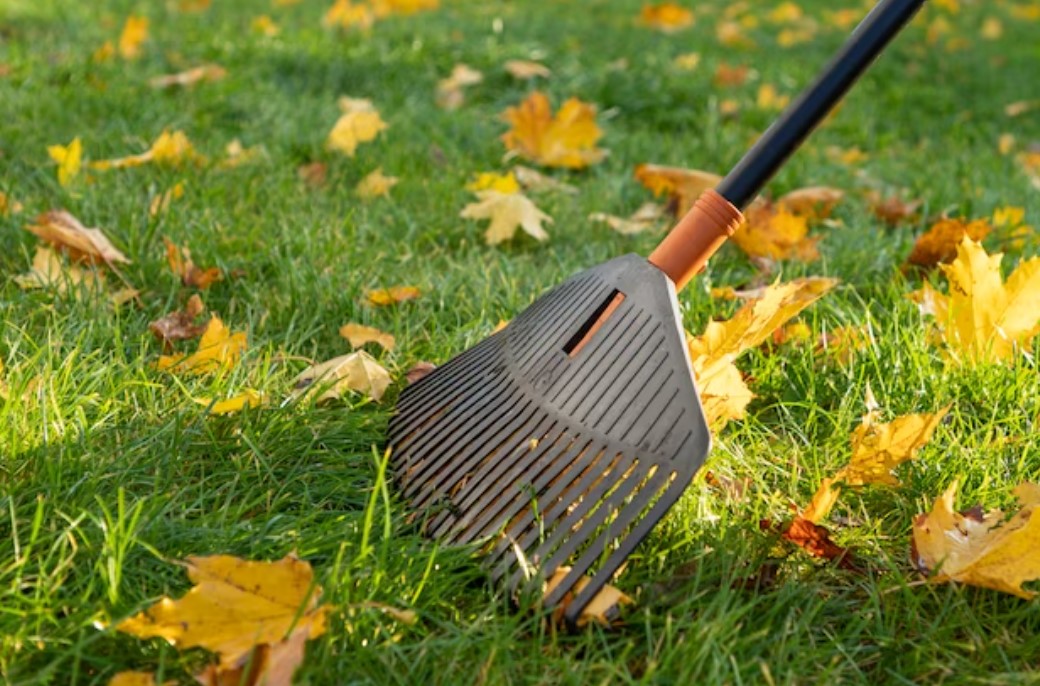Leaf Blower vs Rake: Which is Best for Leaf Cleanup
As the fall season ushers in a picturesque array of colorful leaves, homeowners face the perennial dilemma of choosing the right tool for effective cleanup: leaf blower vs rake: Which is best for leaf cleanup? From environmental impact to efficiency and ease of use, join us as we unravel the age-old debate to find the perfect solution for your autumn yard maintenance.
Leaf Blower vs Rake Comparison
When it comes to clearing fallen leaves and debris from your yard, two popular tools stand out: the leaf blower and the traditional rake. There is always a question: Which is better for Autumn Leaf Cleanup? Each method has its pros and cons, catering to different needs and preferences. Let’s explore the key differences between leaf blower vs rake and how they can offer the best of both worlds for maintaining a pristine yard.
The Different Results
Leaf blowers are efficient at quickly gathering and moving leaves into piles, making them ideal for large yards or properties with many trees. On the other hand, rakes provide a more meticulous and hands-on approach, ensuring a cleaner and more precise finish in tight spaces or delicate areas.
Noise and Pollution
One major concern with leaf blowers is the noise they produce, which can be disruptive to the peace of a neighborhood. Additionally, gas-powered leaf blowers emit pollutants, contributing to environmental pollution. Rakes, in contrast, are quiet and eco-friendly, making them a more considerate option for noise-sensitive and environmentally-conscious users.

Efficiency and Effort
Leaf blowers are undeniably faster at collecting leaves, reducing the time and effort required to clear your yard. However, using a rake can be a more physically engaging experience, providing exercise and a sense of satisfaction from direct interaction with your yard.
Versatility
Rakes are versatile tools that can be used for various yard tasks beyond leaf collection, such as spreading mulch, leveling soil, or cleaning up debris. In comparison, leaf blowers have a specific purpose and may not be as adaptable for other tasks.
Costs and Maintenance
Rakes are inexpensive and require minimal maintenance, making them an affordable and long-lasting investment. Leaf blowers, especially gas-powered models, can be more costly upfront and demand regular maintenance, including fuel, oil changes, and spark plug replacements.
Design
Leaf blowers come in handheld, backpack, and wheeled versions, offering different levels of comfort and power for users. Rakes have a simple and timeless design, requiring no technology or fuel to operate.

Pros & Cons of Using a Rake
Pros
- Less expensive
- No upkeep necessary
- Moss and dead grass can be removed from your lawn by raking; this is more gentle on flowerbeds and young grass.
- They produce no pollutants, making them environmentally friendly and silent.
- Lightweight
Cons
- Greater time commitment
- Additional physical effort is necessary
- May result in back pain
- Less effective

Pros & Cons of Using a Leaf Blower
Pros
- Lowers bending and physical effort
- Flexible (Can blow snow, dirt, and other material)
- Can clean gutters and higher-up areas (such as patio furniture and automobile roofs).
- Strong enough to handle additional material, such as grass clippings
- Available models with several uses include blow, suck, and mulch.
- For large properties, a backpack blower is an option.
Cons
- Because it is a loud gasoline-powered device, the neighbors won’t enjoy it.
- Unsuitable in damp weather or with moist leaves
- Models driven by gasoline pollute the environment.
- Some US jurisdictions have prohibited gasoline blowers, and there are currently debates in the UK as well.
When is it better to use a rake instead of a blower?
Rakes are sometimes more efficient than blowers for making a tidy garden bed. For removing leaves from flower beds, broad expanses of grass, or any other confined places where minute particles are likely to become lodged, a rake is preferable. When dealing with smaller yards or confined spaces, rakes offer better precision and control, ensuring that only the desired areas are cleared of debris. In gardens with delicate plants, a rake allows for gentle cleaning without the risk of damaging foliage, unlike the powerful air blasts from blowers.
Raking, which does not require the use of gasoline-powered engines, also reduces the air pollution caused by leaf blowers. This makes it a significantly more environmentally friendly choice for individuals who want to maintain their gardens without having a harmful effect on the environment. Raking also includes physical effort, which makes it a great type of exercise.
Rakes are also cost-effective, requiring no fuel or electricity to operate, and have fewer mechanical parts, reducing maintenance needs. They are easy to store and require minimal storage space. Overall, when considering environmental impact, cost, precision, and ease of use, a rake proves to be the preferred tool for many gardening and yard maintenance tasks.

Leaf Blower vs Rake: Which is Better for Your Yard?
The answer to this question depends on several factors. If you have a large yard with an abundance of leaves and debris, a leaf blower might be the most practical choice for quick and efficient cleanup. However, if you value precision, eco-friendliness, and a more intimate connection with your yard, a rake is the way to go.
For some homeowners, a combination of both tools might be the best solution. Assembling heaps of leaves with a leaf blower and then switching to a rake for the final cleanup can strike a balance between efficiency and a meticulous finish.
In the end, the “better” option varies from person to person. Assess your yard’s size, the amount of debris, your environmental concerns, and your personal preferences should choose wisely between using leaf blower vs rake as the ideal choice for your yard maintenance routine.

Tips for Effective Leaf Cleanup
Effective leaf cleanup is crucial to maintaining a tidy and healthy outdoor space during the fall season. Whether you choose to use a leaf blower, a rake, or a combination of both tools, you will get the best results if you follow the advice below:
Raking Leaves
Choose a rake with the appropriate width and tine spacing for your yard. Plastic or metal-tined rakes work well on different surfaces. Avoid straining your back by using the proper raking technique. Bend your knees, switch your leading hand occasionally, and switch sides to maintain balance.
Instead of trying to collect all leaves in one pass, rake in layers to prevent leaves from scattering or becoming too heavy to handle. Rake leaves onto a tarp or directly into bags to make the collection process more efficient.
Leaf Blower
The size of your yard and the kinds of debris you’ll be handling should be taken into account. Opt for a handheld or backpack blower for smaller areas and a more powerful wheeled blower for larger yards or heavy leaf coverage.
To avoid multiple cleanup sessions, wait until the majority of the leaves have fallen before using the blower. Start blowing leaves from the downwind side of your property so the wind helps carry the debris in the desired direction. Blow leaves into manageable piles, making it easier to collect or compost them later.

Combining Both Tools Effectively
Use the blower to clear large areas quickly and move leaves into piles or corners. Use the rake to tidy up edges, garden beds, and areas where the blower may be less effective. If you have help, one person can use the blower while the other follows with a rake, maximizing efficiency.
Consider using a mulching attachment on your mower or a mulching blower to shred leaves into small pieces that can nourish your lawn. When using these instruments, keep in mind to put on the proper safety gear, such as gloves and eye protection. Regular leaf cleanup not only keeps your yard looking tidy but also promotes a healthier lawn and garden by allowing sunlight and air to reach the grass and soil beneath.
FAQs
Which is better for a small yard: leaf blower vs rake?
For a small yard, a rake might be more practical as it allows you to easily maneuver around tight spaces and delicate areas. However, a small, lightweight leaf blower can also be efficient in such settings.
Are leaf blowers really that noisy?
Some leaf blowers can be quite noisy, especially gas-powered models. However, there are quieter electric and battery-operated options available, which can be more suitable for residential areas with noise restrictions.
Do leaf blowers harm the environment?
Gas-powered leaf blowers can emit pollutants and contribute to air and noise pollution. Electric and battery-powered blowers are generally more environmentally friendly alternatives.

Are rakes better for the environment than leaf blowers?
Rakes are considered more eco-friendly since they don’t require any fuel or electricity to operate. They are a manual tool that doesn’t emit any pollutants during use.
How much do leaf blowers and rakes cost?
Leaf blowers and rake prices can vary widely based on the type, manufacturer, and features. Generally, leaf blowers can be more expensive than rakes, especially high-quality or commercial-grade models.
Conclusion
The ultimate showdown between leaf blower vs rake: which is best for leaf cleanup. While the leaf blower offers convenience and efficiency, the rake remains an eco-friendly and cost-effective option. Ultimately, the choice between the two depends on individual preferences, environmental concerns, and the size of the cleanup area. Whichever method is chosen, embracing the beauty of autumn and taking care of our environment should remain our top priority.
Related Articles